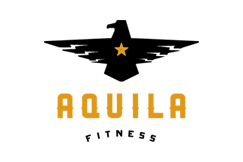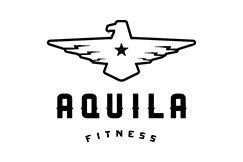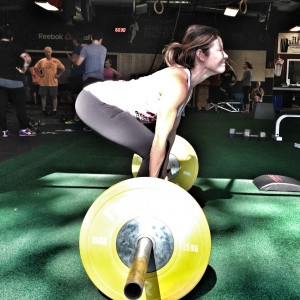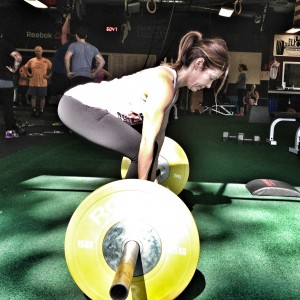5 Rounds, Every 4 Minutes:
400m Run
21 Pull Ups
For years as coaches we have spent our efforts on getting people into a visually pleasing, slightly arched position for squats and deadlifts. We have been so terrified of people getting into the ever feared rounded spinal position that we have over emphasized the arched position. I myself suffered from low back pain for years and was scratching my head, bewildered at why my back hurt when I was “deadlifting with good form,” or so I thought.
We have listened to world class coaches and have heard of the dangers of being hyper-extended or over arched, but I never really thought I was in that category until I started getting some coaching from world class powerlifter Mark Bell over at Super Training Gym. As Mark watched my deadlifts, he would comment that I needed to relax my arch a bit. At times as I got fatigued I would feel my back move into a position which to me felt like the rounded position that we all fear so much and Mark would tell me that the rep was perfect! It took some time of feeling like I was in the wrong position and being told it was actually the right position until I actually started to learn where neutral actually is.
Since learning where neutral actually is, and learning to effectively brace that position, I have had little to no low back pain or even fatigue. Going through this learning process has made me much more aware that many, if not most of you have become over-extenders due to your fear of the rounded back, and most of our back problems are coming from over extension vs. rounded backs. While the rounded back is absolutely something to fear, the over arched position is equally detrimental, and learning to brace a neutral position is the key to maximizing your strength and your longevity in the gym.
The following pictures depict hyper-flexion, hyper-extension, and neutral in the deadlift set up position.
It has been engrained in us that lifting is this position could kill us, and it could, but I have seen many people survive this position with HUGE loads. No I am not saying this good or even ok, but our fear of this position may actually be creating the worst problems of all.
Because we are so scared of the rounded position, we move to the limit of our spinal extension and learn to brace ourselves here. While this may be somewhat of an effective strategy for stabilization, it is dangerous, and it breaks down at heavy loads. In other words, you cannot maintain this position while pulling max efforts. Notice the Pez dispenser head position as well. No bueno.
When you first get into the correct neutral position, you may feel that you are in the rounded position. This is where a coach with a careful eye and some experience will come in handy. Learning a proper set up and bracing sequence is of extreme importance as well. If you can learn to get neural and brace the position, you will produce more force and you will eliminate that pesky low back pain you’ve been struggling with. Some athletes will look slightly rounded in this position due to highly developed spinal erectors.
Learning to brace a neutral position before you ever reach down to grab the bar is a major key to maintaining a neutral spinal position throughout your lift. If you ever watch a powerlifter set up for their deadlift, all that weird looking stuff they are doing is to brace a neutral position and get as tight as possible.
Kelly Starrett describes a great strategy to find the correct posture and maintain it in his book, Becoming a Supple Leopard, which I once again recommend, and basically demand that you all read.
- Squeeze your your butt as hard as you can (sets pelvis in neutral)
- Pull your ribcage down
- Get your belly tight
- Set your head in neutral position and screw your shoulders into a stable position (externally rotate)
Creating torque in the hips and shoulders is the key to bracing a neutral mid-line. If you learn and practice these steps, you can lift better, sit better, and really do everything in your life better.
The video below shows how torque in the hips stabilizes the spine. Give this stuff some thought. It’s time you stop bracing your spines at end range of motion in the over-extension position and start becoming better athletes.








